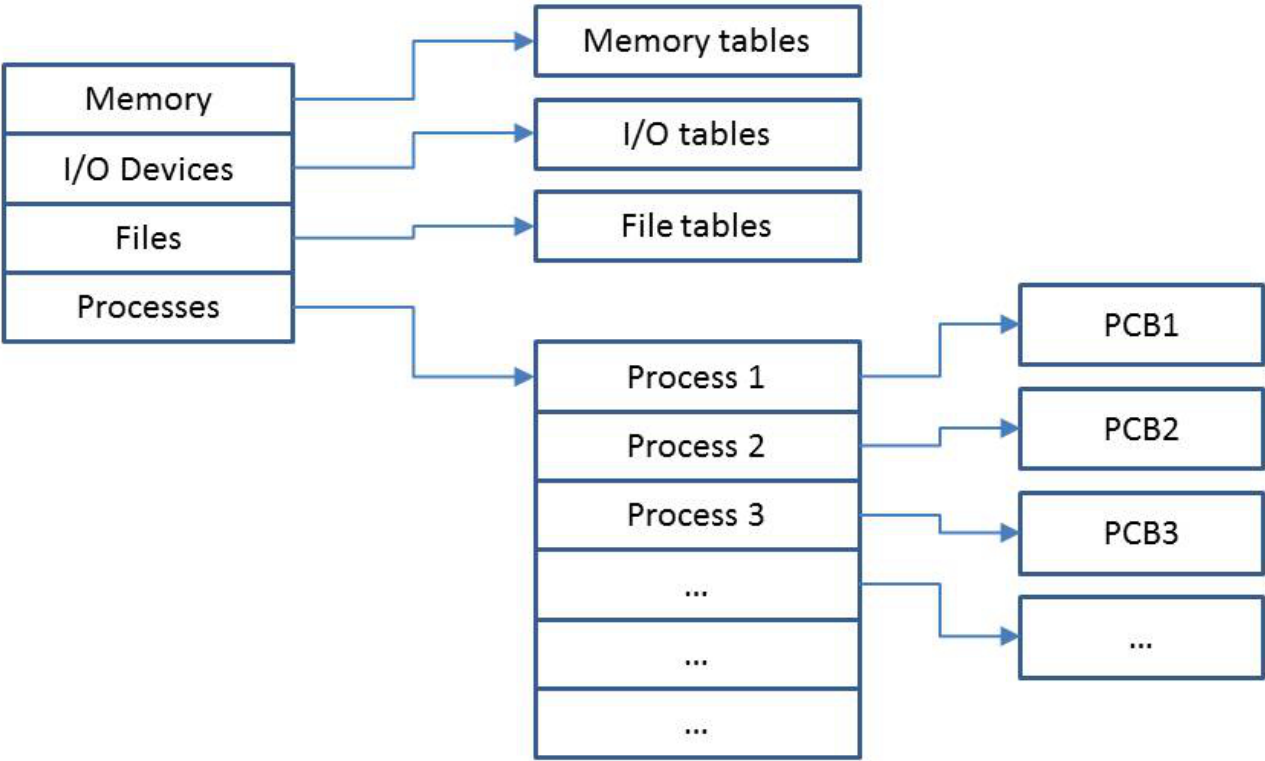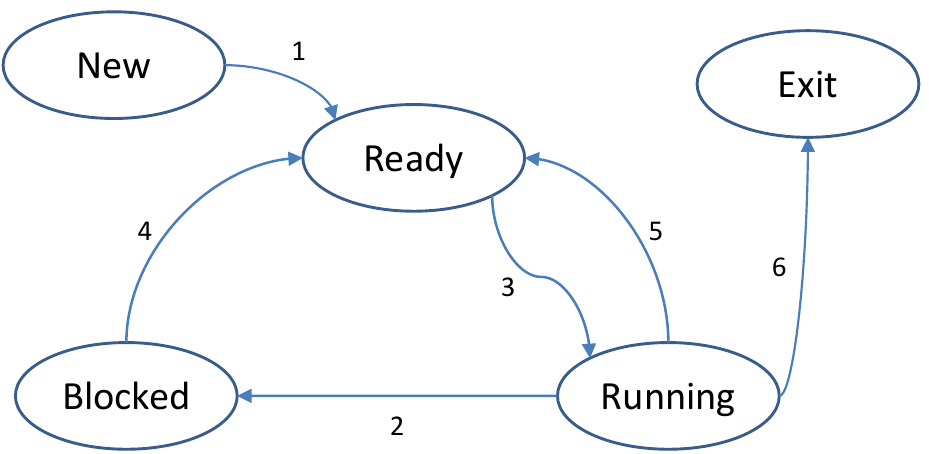2. Processes
07/10/22
Processes
A process is a running instance of a program. The program is passive and 'sits' on the disk. A process may be active and may hold resources
A process has control structures - they store all necessary information related to the management of the program
Context Switching
A process control box contains:
- Process identification (PiD, UID, Parent PiD)
- Process control information (process state, scheduling information)
- Process state information (user registers, pc etc)
The process control block is necessary for context switching in multi programmed systems
Process control blocks are kernel data structures:
- They are stored in the process table
- They are accessible in kernel mode only
- Direct "user-mode access" could compromise their integrity
- They are accessed through system calls
Process Implementation

- Process table holds a process control block for each process
- Info about status of resources is maintained in tables
- Process tables - process control blocks
- Memory tables - memory allocation, protection, virtual memory etc
- I/O tables - Availability, status, transfer information
- File tables - Location, status
- Tables are in kernel space and cross referenced.
Process States and Transitions

- New process has just been created and is waiting to be admitted
- Ready process is waiting for the CPU to become available
- Running process 'owns' the CPU
- Blocked process cannot continue (waiting for IO)
- Terminated process is no longer executable
- Suspended process is swapped out The interrupts lie on the basis of the transitions
Context Switching - Multi-programming
Mutli-programming goes back to the 'MULTICS' age This is achieved by alternating processes and context switching
- Single processor systems result in concurrent execution
- True parallelism requires multiple processors
Save CPU State -> The process control block is updated Restore CPU State -> the process control block read
A trade-off exists between the length of time-slice and context switching.
- Slow time slices - good response times. low utilisation
- Long time slices - poor response times, better utilisation
Process
- A process memory image contains the program code and a data segment (stack or heap)
- Every process has its own logical address space
- Some OS use address space layout randomisation.
System Calls
True system calls are 'wrapped' in the OS libraries following a well defined interface
- Unit:
fork()generates an exact copy of the parent - Windows:
NTCreateProcess() - Linux:
Clone()
System calls are necessary to notify the OS and the process has terminated.
- Resources must be de-allocated
- Output must be flushed
- Process admin may have to be carried out
Fork
fork()creates an exact copy of the current process. The first instruction carried out by the child in the first one after theforkcallfork()returns the process identifier of the child process to the parent processfork()returns 0 to the child process